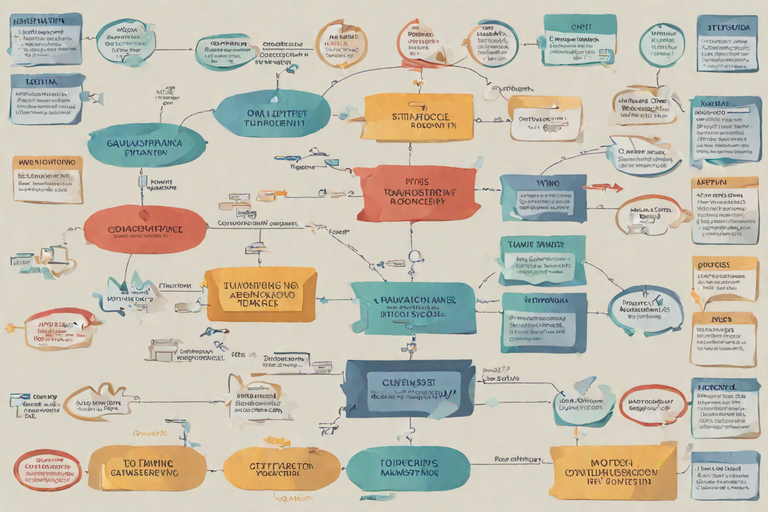Content marketing has become a cornerstone of digital marketing efforts for businesses of all sizes. A well-crafted content marketing strategy can drive traffic, engage your target audience, and ultimately, lead to increased brand awareness and revenue. In this step-by-step guide, we will walk you through the process of creating an effective content marketing strategy.
Step 1: Define Your Goals and Objectives
The first and most crucial step in building a content marketing strategy is to define your goals and objectives. What do you want to achieve with your content? Some common content marketing goals include:
- Increasing website traffic: Do you want to drive more visitors to your website or blog?
- Building brand awareness: Is your primary goal to get your brand in front of more people?
- Generating leads: Do you aim to capture potential customer information for future marketing efforts?
- Boosting sales: Is the primary focus of your content marketing to convert leads into paying customers?
- Educating your audience: Do you want to position your brand as an authority in your industry?
- Improving customer retention: Are you looking to keep existing customers engaged and satisfied?
By clearly defining your objectives, you can tailor your content strategy to meet these specific goals.
Step 2: Know Your Audience
Understanding your target audience is essential in creating content that resonates with them. You need to know who your ideal customers are, what challenges they face, and what questions they have. Consider creating buyer personas, detailed profiles of your typical customers, to gain insight into their demographics, interests, and pain points.
Your content should address the needs and interests of your audience. It’s also helpful to identify where your audience spends their time online, which social media platforms they use, and the websites or forums they visit. This information will guide your content distribution strategy.
Step 3: Content Research and Planning
Once you have a clear understanding of your goals and audience, it’s time to plan your content. Start by conducting research to identify the topics, keywords, and trends relevant to your industry or niche. Consider the following aspects:
- Keyword Research: Use keyword research tools to find relevant keywords that have a decent search volume but aren’t too competitive. These keywords will be the foundation of your content.
- Competitor Analysis: Analyze what content your competitors are producing and which topics are performing well for them. This can provide inspiration for your content strategy.
- Content Types: Determine what types of content will best serve your audience. This might include blog posts, videos, infographics, podcasts, webinars, or a combination of these.
- Content Calendar: Create a content calendar that outlines the topics, publishing dates, and distribution channels for your content. This will help you stay organized and consistent.
Step 4: Content Creation
Now it’s time to start creating content. Quality is key. Your content should be informative, valuable, and engaging. Consider the following tips:
- Address Pain Points: Your content should provide solutions to your audience’s problems or answers to their questions. It should offer real value.
- Originality: While it’s okay to draw inspiration from others, strive to create original and unique content that sets you apart.
- Visual Appeal: Use images, videos, and infographics to make your content more engaging and visually appealing.
- SEO Optimization: Incorporate the keywords you’ve researched into your content while ensuring it reads naturally. Optimize meta tags, headers, and URLs for SEO.
- Content Length: Depending on the platform, the ideal content length can vary. Blogs typically range from 1,000 to 2,000 words, while social media posts should be concise and to the point.
Step 5: Content Distribution
Creating great content is only half the battle. You need to ensure it reaches your target audience. Here’s how to distribute your content effectively:
- Social Media: Share your content on your social media channels. Create a schedule to maintain consistency.
- Email Marketing: Send out newsletters featuring your latest content to your email subscribers.
- Guest Posting: Contribute guest posts to industry-related blogs and websites to reach a broader audience.
- SEO: Optimize your content for search engines to improve its ranking in search results.
- Paid Advertising: Consider using paid advertising on platforms like Google Ads or social media to boost the visibility of your content.
- Content Syndication: Syndicate your content on platforms like Medium, LinkedIn, or other content-sharing websites.
Step 6: Measurement and Analysis
To determine the effectiveness of your content marketing efforts, you need to track and analyze key metrics. Common metrics to measure include:
- Website Traffic: Monitor the number of visitors to your website and the sources of traffic.
- Engagement Metrics: Look at likes, shares, comments, and other engagement metrics on social media.
- Conversion Rates: Measure how many visitors take desired actions, such as signing up for your newsletter or making a purchase.
- Bounce Rate: Evaluate the percentage of visitors who leave your site after viewing just one page.
- Content Performance: Assess which pieces of content perform well and which ones need improvement.
- SEO Rankings: Monitor your content’s rankings in search engine results pages (SERPs).
Use analytics tools like Google Analytics, social media insights, and email marketing analytics to gather this data. Regularly review these metrics to make data-driven decisions and adjust your strategy as needed.
Step 7: Iteration and Optimization
Based on your analysis, continuously refine and optimize your content marketing strategy. Here are some ways to iterate and improve:
- Content Quality: Always strive to improve the quality of your content. Listen to feedback and adjust accordingly.
- Content Gaps: Identify gaps in your content strategy and create new content to fill those voids.
- A/B Testing: Experiment with different content formats, headlines, and distribution channels to find out what works best.
- Stay Updated: Keep up with industry trends and adjust your strategy to stay relevant.
- Consistency: Maintain a consistent publishing schedule to keep your audience engaged.
Step 8: Scale and Expand
As your content marketing strategy proves successful, consider scaling and expanding your efforts. This might involve producing more content, exploring new content formats, targeting additional audience segments, or expanding to new platforms or channels.
It’s essential to remain agile and adapt to the ever-changing landscape of content marketing. Keep learning, testing, and refining your approach to ensure that your content marketing strategy continues to drive positive results for your business.
Conclusion
Creating an effective content marketing strategy is a process that requires careful planning, continuous effort, and a commitment to delivering valuable content to your target audience. By defining your goals, knowing your audience, planning your content, creating quality pieces, distributing them effectively, measuring their performance, iterating and optimizing, and scaling as needed, you can build a robust content marketing strategy that drives traffic, engagement, and ultimately, success for your business. Remember that the world of content marketing is ever-evolving, so staying informed about industry trends and best practices is crucial for long-term success.




